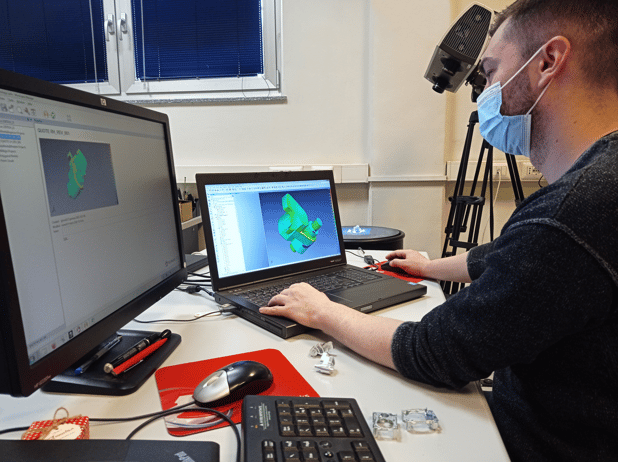As winner of numerous international awards, Bruschi Spa is known for its innovative approach in design and technology. We are glad to share our insights and experiences with the industry members.
Mechanical strength: Breaking load test for zinc alloy components

In terms of mechanical strength, the breaking load is commonly defined as ultimate tensile stress (UTS), which is the maximum external force limit applied beyond which a material loses its functional specifications in terms of strength. Tensile strength tests vary according to the type of stress the material is subjected to, which we will describe later. In our case, are tests to be carried out on a component during production.
On the subject of mechanical strength, and more in detail, breaking load, in this post, we will briefly define the function of rupture tests in the structural quality control of zinc die castings during production. This article will also describe the instrument used to perform these tests to ensure compliance with the specifications of the component and some case studies related to the main topic.
Ultimate tensile stress: breaking strength test of a part or assembly
As anticipated, the ultimate tensile stress is the force that must be applied to a component to cause yielding and/or rupture and is measured in mega-pascals, indicated by the symbol MPa, which is the primary unit of pressure measurement, that is, of the force on the unit of surface.
In order to proceed with this test, the force is applied at a point of the piece predetermined and agreed with the customer to observe the load necessary to cause its breakage or yielding. In this way, it is possible to test the amount of force needed for the test piece to lose the specific mechanical properties, that is, the ability of the component to withstand external loads and, consequently, be unusable.
The execution of this process requires a specific machine for laboratory tensile/compression tests.
Therefore, this machine is extremely crucial because breaking strength tests are among the key elements for the functional verification of a finished product. Often individual zinc die-cast components are mounted in an environment or in an assembly that undergoes various stresses from the outside, and these forces, if not adequately considered and analyzed, could compromise one or more elements of the system by jeopardizing the function of the product itself. An obvious example of this concept is undoubtedly the steering group of a car that undergoes different stresses due to different drivers. The individual elements and the system must necessarily be able to perform their function without breaking even in the event of excessive forces applied by drivers with extreme driving styles. Consequently, avoiding malfunctions and ensuring the correct mechanical strength of steering components is an essential safety factor for the driver.
The ultimate tensile stress: real tests and computer simulations (FEM)
This kind of test can also be simulated within CAD (FEM) applications, but as the die casting process is known, also using vacuum technology, it does not allow the molding of parts with theoretical material density because, as a result of the volumetric shrinkage during the cooling inside the zones of the die-cast with a higher mass, microcavities are created, typically called shrinkage porosity, which could compromise the performance of the product in terms of mechanical strength. These density variations are not completely intercepted by the simulation software systems, which can be very useful in the design phase but which, in terms of production, could call into question the achievement of the required specifications due to the inaccurate results detected by the simulation program. For this reason, it is recommended to use simulation programs to define an idea of reality, a production guideline, and then, directly in the foundry, instead proceed with sample checks during the molding and verify in detail every single aspect related to mechanical strength.
Having constant real-time control over the production, cyclically checking on a sample basis, is therefore essential to verify if the production complies with the customer's specifications. Thus, the advantage of using these control instruments directly in production involves continuous control and the ability to act in real-time to avoid any line interruptions.
In conclusion
As we have briefly observed before, the tests in production of the ultimate tensile stress do not replace the simulations, but they place side by side with different objectives. These are critical, periodic tests to ensure a reliable and specific process during production.
